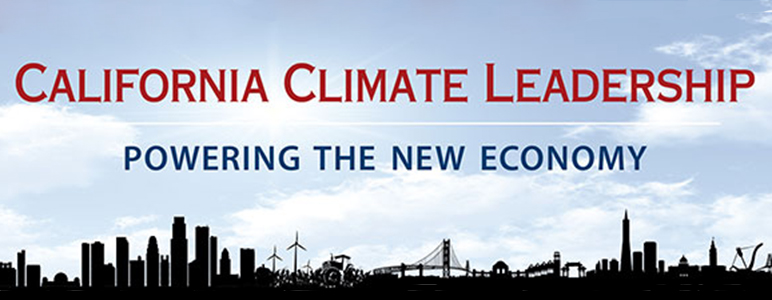


In the final days of the 2015 California legislative session, Senate Bill (SB) 350, the Golden State Standards Bill, which primarily sets a 50% renewable portfolio standard (RPS) for the state’s electric utilities, became the center of great debate.
From the beginning, the 50% RPS enjoyed broad support, but other elements of the bill remained unclear or controversial. Over five days, SB 350 took on around 250 revisions, and in the end, the matter that received the most attention was removal of the bill’s 50% petroleum-use reduction targets.
The "gutting" of the bill's petroleum elements was initially characterized as a petroleum lobby victory and a dramatic deviation from goals declared in Governor Jerry Brown’s inaugural address. However, an article in the Sacramento Capitol Weekly provides insight into what ultimately can be framed as a major victory for transportation electrification initiatives in the state, which are inherently linked with the state’s broader greenhouse gas (GHG) emissions strategies. Clearly, SB 350 provides some opportunity to drive carbon out of the state’s transportation fuel mix.
Expands transportation electrification
Consistent with its initial petroleum reduction targets, SB 350 emphasizes the use of transportation electrification (TE) as a tactic to combat climate change. Specifically, it changes the Public Utilities Code to include a new definition that creates a more diverse eligibility for TE projects. This is in line with the 2015 ZEV Action Plan draft, which focuses on expanding TE as a key strategy and codifies the desire to push TE into new and innovative spheres.
Helps meet 2030 & 2050 GHG targets
Extensive language in SB 350 directly links the 2030/2050 GHG emission reduction targets with TE. It finds and declares that “reducing emissions of greenhouse gases to 40% below 1990 levels by 2030 and to 80% below 1990 levels by 2050 will require widespread TE.” This direct linkage creates significant opportunity for programs designed to promote electric vehicles, electrified transit and even rail and truck transport.
Directs IOUs to achieve TE goals
SB 350 expands the state’s authority to direct the investor owned utilities (IOUs) to implement TE. This guidance likely will diversify the types of programs that the IOUs create, which will now need to align with the new TE definition. As such, it is conceivable that we will see prompt action by the California Public Utilities Commission on an array of TE proceedings addressing a wide range of market sectors – which is exciting. Notably, each IOU previously has filed proposals with the commission for deployment of light-duty electric vehicle charging infrastructure, which remain pending.
Many ways to reduce petroleum use
Although the bill's original language would have reduced use petroleum by 50% through legislative fiat, it is by no means the only tool at the state’s disposal. That is, multiple agencies still have authority to target such reductions. Agencies may press for such reductions through existing rulings and programs — all of which contribute to a collective reduction in transportation-related carbon emissions. For example, on September 25, the Air Resources Board restored the Low-Carbon Fuel Standard (LCFS), with the goal to cut transportation fuel emissions 10% within five years.
Broad step in the right direction
Although it is difficult to say exactly what will happen as a result of SB 350, one can reasonably expect that it will complement the all-hands-on-deck approach already under way in multiple sectors to clean up energy use, including transportation.
Optimistically, we expect
- Continued support to develop the state’s electric vehicle market and charging infrastructure
- Added focus and motivation to electrify bus, transit and freight trucking systems
- Additional efforts to electrify passenger and freight rail systems
- Promotion of clean boat and ferry operations programs
- Opportunities to link TE to large, transformative projects, such as high-speed rail
Above all, SB 350 is a broad step in the right direction not just on the RPS and the electricity sector, but also for the transportation sector. Congratulations to the Legislature and Senate Pro Temp Kevin de León for crafting a bill that gives us all an opportunity to create lasting change.

